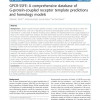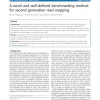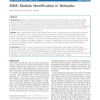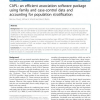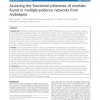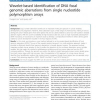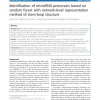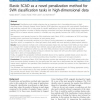BMCBI
2011
13 years 3 months ago
2011
Background: G protein-coupled receptors (GPCRs) transduce a wide variety of extracellular signals to within the cell and therefore have a key role in regulating cell activity and ...
BMCBI
2011
13 years 3 months ago
2011
Background: Second generation sequencing technologies yield DNA sequence data at ultra high-throughput. Common to most biological applications is a mapping of the reads to an almo...
BMCBI
2011
13 years 3 months ago
2011
Background: Graphical models of network associations are useful for both visualizing and integrating multiple types of association data. Identifying modules, or groups of function...
BMCBI
2011
13 years 3 months ago
2011
Background: Using microarray and sequencing platforms, a large number of copy number variations (CNVs) have been identified in humans. In practice, because our human genome is a d...
BMCBI
2011
13 years 3 months ago
2011
Background: Pairwise sequence alignment methods are widely used in biological research. The increasing number of sequences is perceived as one of the upcoming challenges for seque...
BMCBI
2011
13 years 3 months ago
2011
Background: Combining multiple evidence-types from different information sources has the potential to reveal new relationships in biological systems. The integrated information ca...
BMCBI
2011
13 years 3 months ago
2011
Background: Copy number aberrations (CNAs) are an important molecular signature in cancer initiation, development, and progression. However, these aberrations span a wide range of...
BMCBI
2011
13 years 3 months ago
2011
Background: Classification and variable selection play an important role in knowledge discovery in highdimensional data. Although Support Vector Machine (SVM) algorithms are among...
